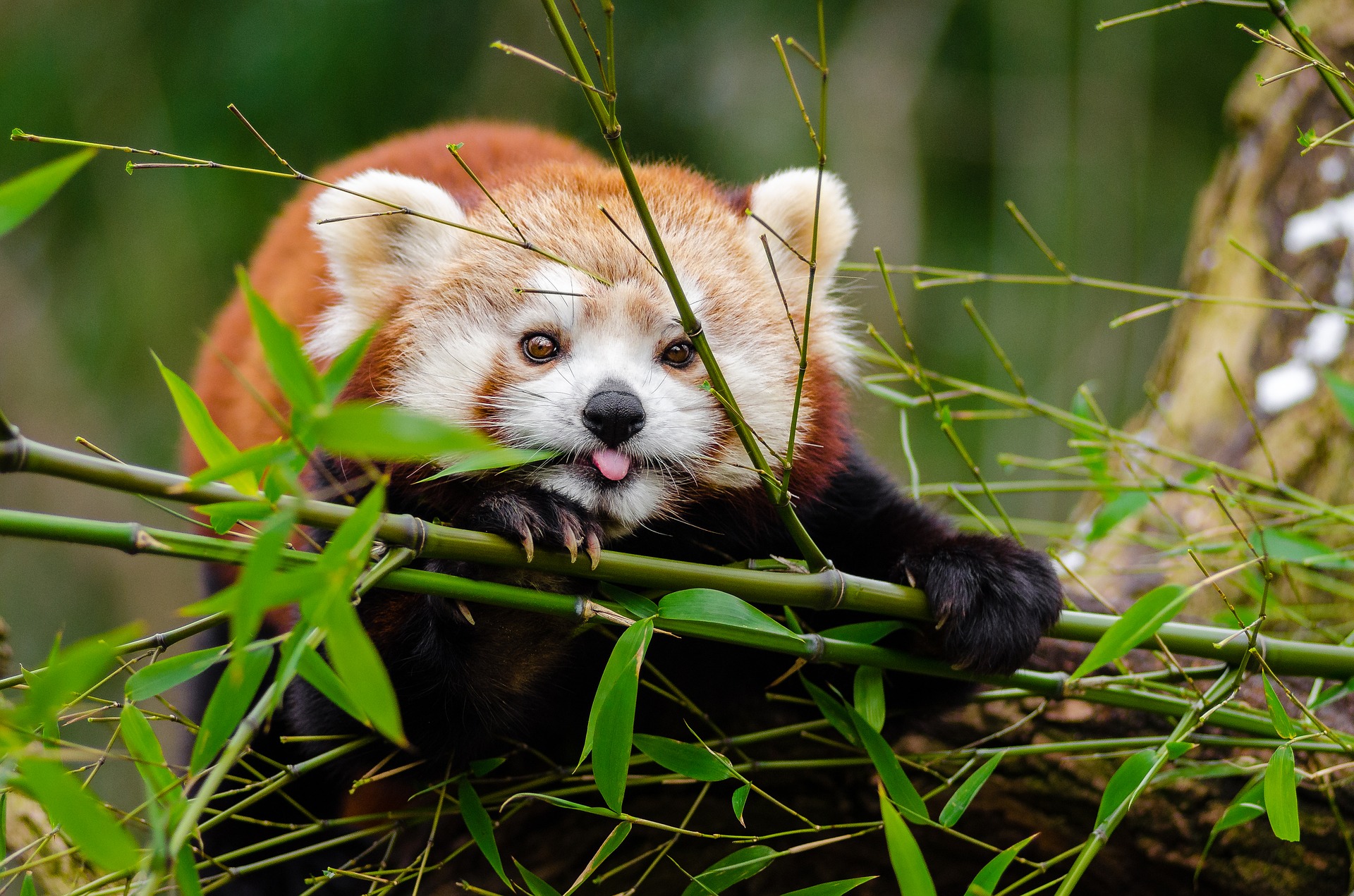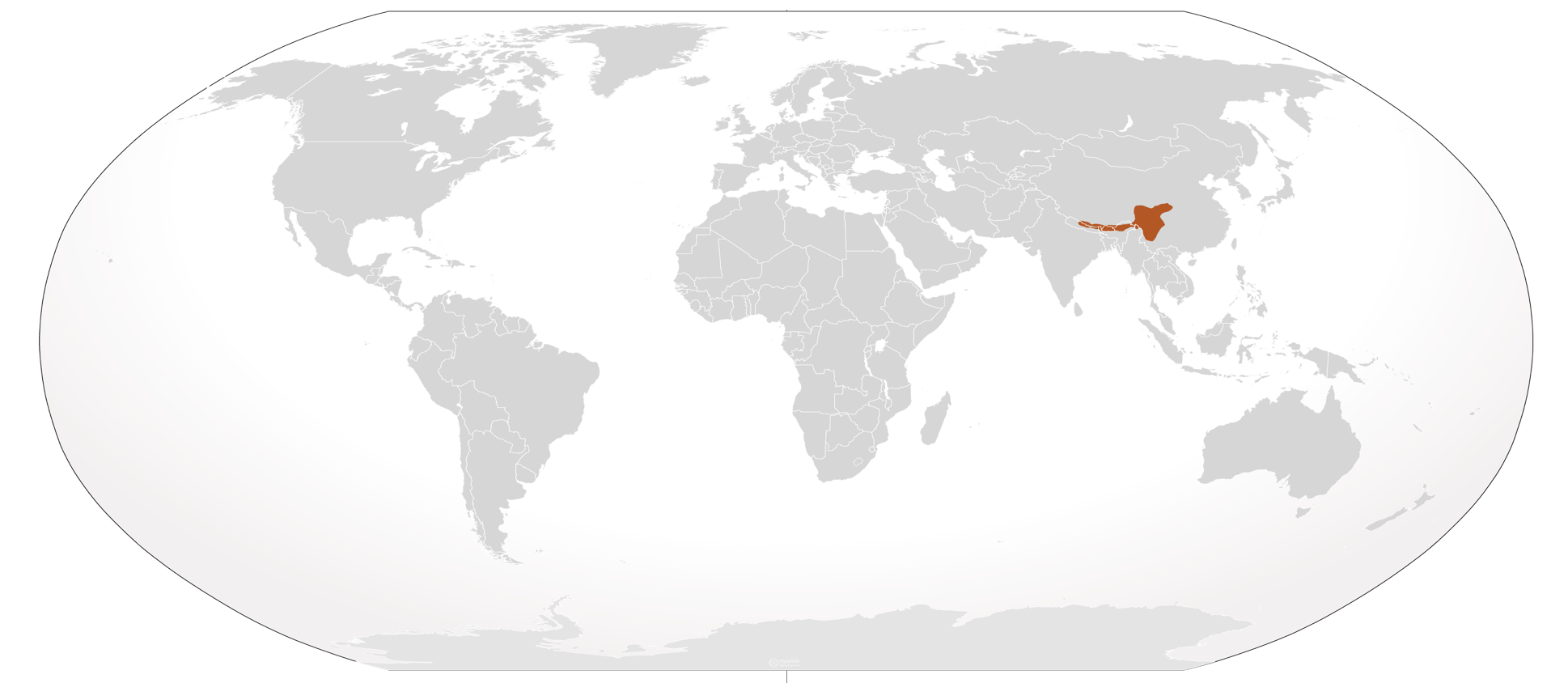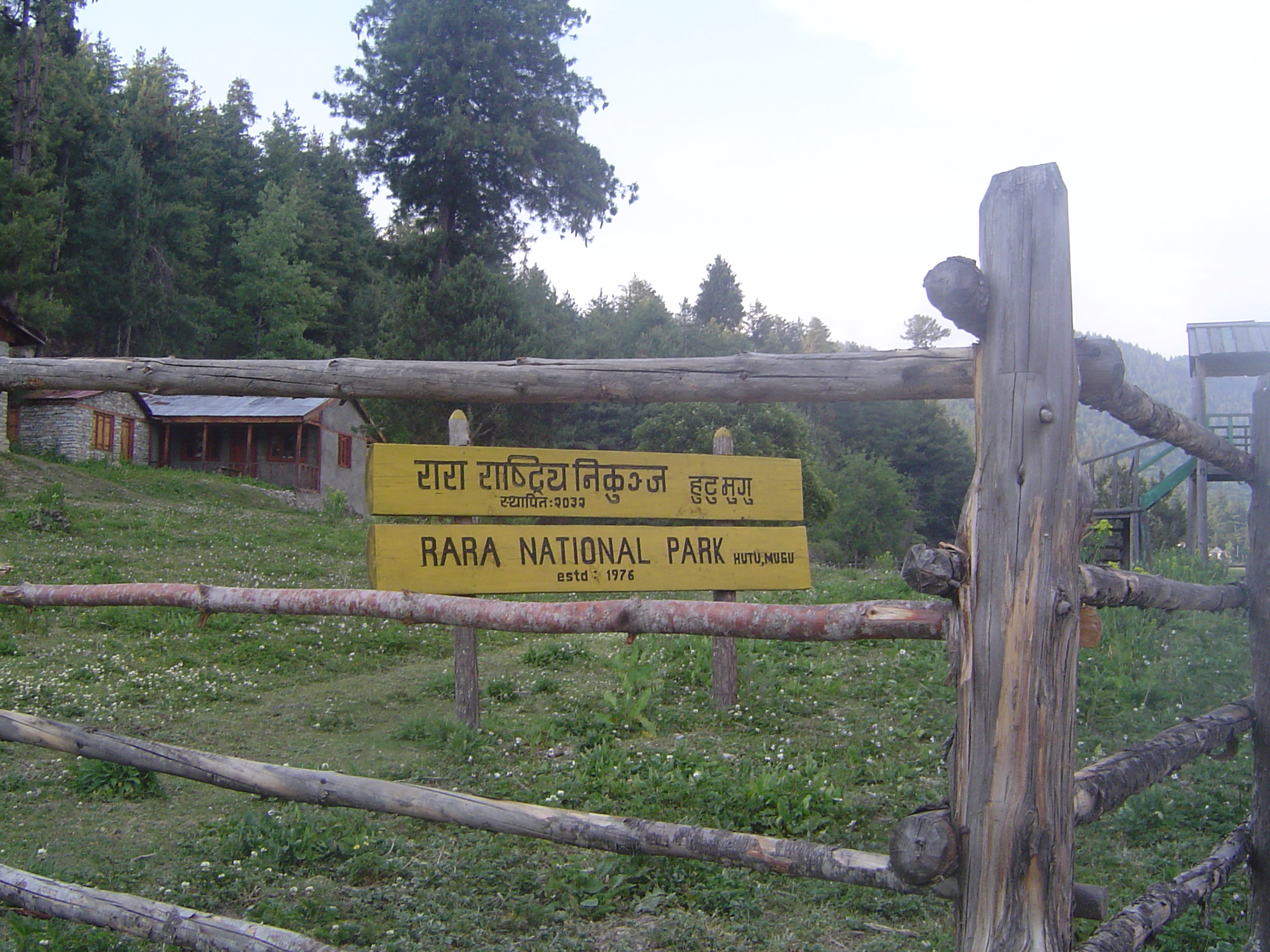Human-Wildlife Conflict
2.3 The Effect of Livestock Grazing on the Himalayan Red Panda, Ailurus fulgens
Henry A. Miller-Davis
The red panda is a beloved species across Asia. However, the mammal must coexist with a growing human population and a decreasing habitat range. Can the native people in the Eastern Himalayas learn to coexist with the red panda or will they drive it extinct?

One of the most interesting and adored species of the diverse fauna of Asia is the red panda (Ailurus fulgens), also known as the lesser panda, which is a reddish-brown arboreal mammal about the size of a house cat.6 The fossils of Parailurus, an ancient relative of the extant red panda, have been found throughout the world in Europe, North America, and Asia.7,9 Red pandas, however, only live in Asian temperate forests on mountainous slopes at altitudes between 1,500 and 4,800 meters (4,920 and 15,748 feet) , which limits their distribution mostly to the countries of Nepal, Myanmar, Laos, and China (Figure 2).4,5,8,9 The red panda population in this region must coexist with a growing human population and has suffered from the detrimental impact humans have on the environment. As a result, the wild population of red pandas has unfortunately declined an estimated forty percent over the past fifty years, leaving around <10,000 left in the wild.3,9 The main driver behind their declining population is habitat loss from livestock grazing in the region.2,3,4,8

With the exception of China, countries in the Eastern Himalayas are among the least developed in the world and citizens of these nations live in substandard conditions. Nepal, for example, scored 0.540 on the Human Development Index, ranking it 145th in the world.1 Seventy percent of Nepal’s population works in agriculture and researchers Sanjay Dorji, Rajaratnan Rajaratnam, and Karl Vernes describe “rural poverty [as] both the cause and effect of much environmental degradation through a reliance on livestock.”3 Formerly, farmers kept livestock to provide food for only their own household, but commercialization in the region has changed this. In recent years, locally produced cheese has become popular with tourists, so large numbers of farmers in the region now raise additional livestock to sell their milk products in this newly established market.8
There are several threats to the red panda population caused by this increase in livestock grazing. The first of which is not from the livestock themselves but rather the dogs that accompany the herds, because they attack red pandas and introduce diseases.2,11 Dogs are a necessary component of herding because they can control the large herds of livestock and protect them from wild predators.3,8 However, these dogs will also attack and kill red pandas despite the fact that red pandas only eat bamboo, insects, birds, and small mammals.3,8,11 Furthermore, herding dogs carry infectious diseases that are transferable to red pandas through contact with the dogs’ feces and urine or through a bite.3,8 One of the most fatal of these diseases is canine distemper, which is highly contagious and spread simply through contact with infected bodily fluids.3 Moreover, livestock grazing results in destruction of the natural habitat and a reduction in bamboo abundance. Livestock grazing has caused forest degradation because the environment cannot sustain the increasingly larger herd sizes.8 Red pandas and livestock do not compete for the same food, but grazing prevents bamboo from growing to the necessary height for red pandas to eat.11 Red pandas avoid eating low-growth bamboo because they are vulnerable to animals such as leopards while on the ground. The lack of forest cover that results from overgrazing also results in insufficient shelter to support red pandas.2 The species’ very specific habitat already restricts it to a rather small geographic area, so the loss of habitable land in this area is exceptionally crucial because the red panda cannot live elsewhere.

Although the presence of livestock has long been believed to reduce the presence of red pandas in locations that are otherwise satisfactory habitats, it was only a hypothesis before a scientific study was conducted to determine if there is statistically significant evidence of this being true. In 2014, researchers Hari Sharma, Jerrold Belant, and Jon Swenson collected information on the correlation between livestock presence and red panda presence in Rara National Park in Nepal.8 The researchers created a grid around Rara Lake in the park that consisted of linear lines intersecting every 500 meters, and at each of the intersections they established ten by ten meter plots that they would survey. The team recorded the appearance of fecal pellets from red pandas in each plot to determine if they had been living in the area. They also selected five explanatory variables that could perhaps explain the presence or non-presence of red pandas in each location, and they recorded data on each of these variables at every site. The five explanatory variables were bamboo presence, elevation in meters, direction of the slope, distance to water, and the presence of livestock.8
To build a statistical model, the team first had to check for multicollinearity among the explanatory variables because for the model to have high predictive power, no two variables can be highly correlated. Since no two variables had a correlation greater than 0.7 (statistical significance is accepted when α < 0.05), statistical models developed from the data can be considered fairly accurate.8 Using various combinations of the five explanatory variables, the team created models predicting the appearance of red pandas based on the data. Models that included bamboo and elevation had the highest Akaike model weights, meaning that they best predicted the presence of red pandas in a chosen plot. Models that included livestock presence less supported the presence of red pandas in a plot.8 To test whether livestock presence was a statistically significant variable in the models, the team averaged the parameter estimates and 95% confidence intervals from the 16 models tested.8 The results indicate a 97.7% chance that the presence of livestock in a plot has a negative impact on the probability of red panda presence in an area.8 This research clearly shows that livestock grazing in an area reduces the presence of red pandas in otherwise suitable habitats that have adequate bamboo resources and are at the correct elevation.

The data provides evidence that the expanding livestock herd sizes in areas of the Eastern Himalayas, such as Nepal, are harming the red panda population. This issue cannot be easily fixed because the people of Nepal and other neighboring nations depend on livestock for their livelihoods. However, there is an option that could allow for the mutual co-existence of the livestock herds and red pandas. The data from Sharma, H., et al. (2014) also shows that aspect (direction of the slope of the mountain) is a statistically significant variable in the models, and that there is a much lower probability of the presence of red pandas on south-facing slopes.8 Therefore, if livestock were restricted to grazing zones that are established only on the south-facing slopes of mountains, then the livestock herds would reduce their contact with most of the red panda population.8 Furthermore, the governments in the region should disseminate pamphlets to villagers to inform them about the effect livestock grazing has on red pandas.8,10 Another team of researchers in the nation of Bhutan discovered through questionnaire surveys that a majority of villagers in the area were completely unaware that their actions were harming the red pandas.3 While the implementation of these suggestions may prevent further decline in the red panda population, implementation is unlikely in the Eastern Himalayas because it will be difficult for the governments of this region to cooperate to solve the issue. Although extinction is unlikely in the near future, the red panda will reach record low numbers and will likely be reclassified from a threatened to an endangered species.
References:
- Central Intelligence Agency. (2015). The World Factbook: Nepal.
- Dorji, S., et al. (2011). Habitat Correlates of the Red Panda in the Temperate Forests of Bhutan. PLOS ONE 6(10):e26483. https://doi.org/10.1371/journal.pone.0026483
- Dorji, S., et al. (2012). The Vulnerable red panda Ailurus fulgens in Bhutan: distribution, conservation status and management recommendations. Oryx, 46(4):536-543.
- Friends of the Rosamond Gifford Zoo Education Volunteers. (2005, August 12) Red Panda.
- Holtcamp, W. (2009, February 1) Fighting for the Firefox. National Wildlife Foundation.
- National Geographic. (2015). Red Panda. National Geographic Society. Retrieved from http://animals.nationalgeographic.com/animals/mammals/red-panda/
- Sasagawa, I., et al. (2003). Discovery of the extinct red panda Parailurus (Mammalia, Carnivora) in Japan. Journal of Vertebrate Paleontology, 23(4):895–900.
- Sharma, H., et al. (2014). Effects of livestock on occurrence of the Vulnerable red panda Ailurus fulgens in Rara National Park, Nepal. Oryx, 48(2):228-231.
- Wei, F., et al. (1999). Current distribution, status and conservation of wild red pandas Ailurus fulgens in China. Biological Conservation, 89(1999):285-291.
- Williams, B. (2006). Earth Island News: red Panda Project. Earth Island Journal, 21(3):18.
- Yonzon, P.B, & Hunter, M., Jr. (1991). Conservation of the red panda Ailurus fulgens. Biological Conservation, 57(1):1-11.
Figures:
- AdwaitComred. (2014). [Photograph of the Rara National Park sign]. Retrieved from Wikimedia Commons. CC BY-SA 3.0.
- IUCN Red List. (2012). [Map of the red panda’s habitat range]. Retrieved from Wikimedia Commons. CC BY-SA 3.0.
- Pexels. (2016). [Photograph of red panda]. Retrieved from Pixabay. Public Domain.
- Punya. (2014). [Photograph of cow farming in Nepal]. Retrieved from Wikimedia Commons. CC BY-SA 4.0.
- strichpunkt. (2017). [Photograph of a red panda in a tree]. Modified from Pixabay. Public Domain.
